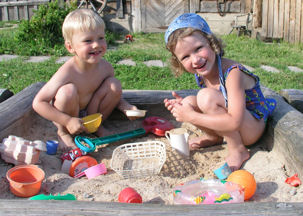 As Florida waits and wonders if BP’s oil disaster is going to visit its beaches, most people are thinking about the environmental damage and the whammy it will bring to the just-thinking-about-recovering tourism industry. Those impacted the most so far, Louisiana, found people making a rush on the fresh fish markets, fearing stalls would be empty soon.
As Florida waits and wonders if BP’s oil disaster is going to visit its beaches, most people are thinking about the environmental damage and the whammy it will bring to the just-thinking-about-recovering tourism industry. Those impacted the most so far, Louisiana, found people making a rush on the fresh fish markets, fearing stalls would be empty soon.
But as a prospect researcher, every time I hear of a downturn I know that someone is making money. Every crisis, every market crash, and yes, every environmental disaster means someone is going to be rolling in dough. Wouldn’t you have wanted the company manufacturing and distributing face masks during the SARS crisis to be your best donor? Well at this moment BP is paying folks to try to stop the oil leak, to clean up the spilled oil and for all of the services that wrap around those activities. Are any of those companies on your donor prospect list? I hope so!
I attended the Association of Professional Researchers for Advancement-Florida chapter conference last week and was favored with a presentation by Lori and David Lawson of DonorTrends. This couple is always full of usable advice on prospect research and last week was no exception!
The Lawsons pointed out that the economy is always going up or down and that someone is always making money along the way. I’ve talked about “recession proof” businesses before such as waste disposal and funeral homes, but the Lawsons talked about those businesses that do even better when the economy is going down. Companies like repossessors, second-hand stores, junkyards and auctions are on the list. I could almost hear everyone in the room slapping their foreheads and saying “duh!” Yes, it sounds obvious once you hear it, but most of us are not viewing the economy from this perspective.
But the Lawsons didn’t just talk at us, they pointed us to some fabulous resources like Industry Trends information from a financial analysis company called Sageworks. Find out which private companies were doing the best and worst. Or maybe you have a donor prospect in one of the businesses that people are willing to indulge in when money is tight.
As a nonprofit it is in your best interest to diversify your portfolio of donors as much as possible. Prospect research can help you do this. Take a peek into your donor database and start searching for donors whose business or industry might be doing even better right now and give them some special attention while you are waiting for other donors to recover.
 Have you heard of
Have you heard of  A relationship management system goes beyond moves management or prospect tracking. At the
A relationship management system goes beyond moves management or prospect tracking. At the  The
The  The
The